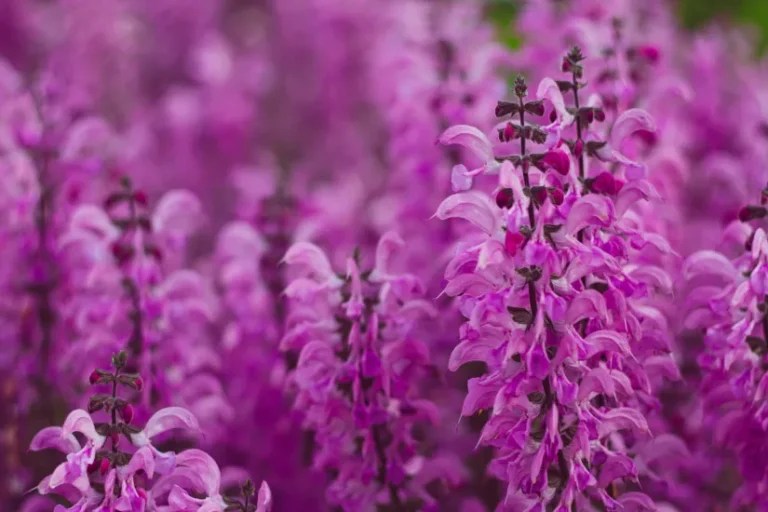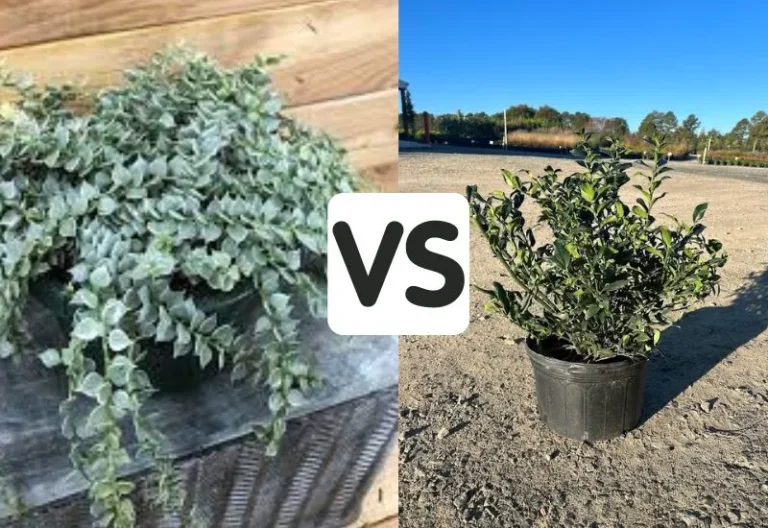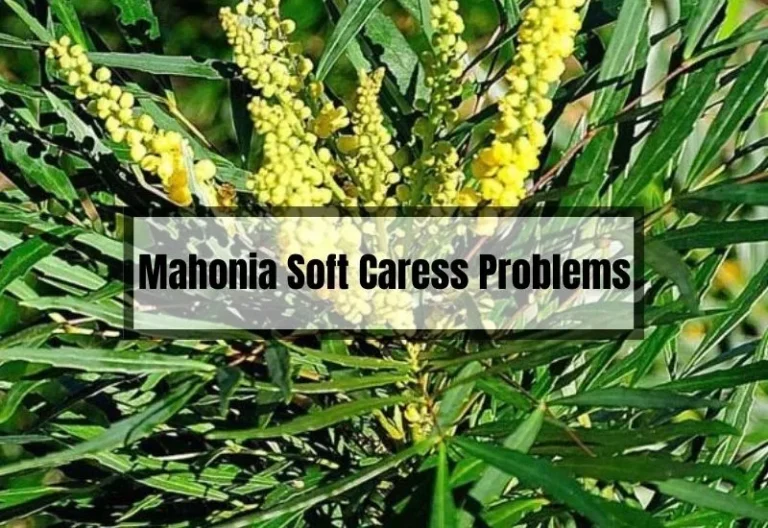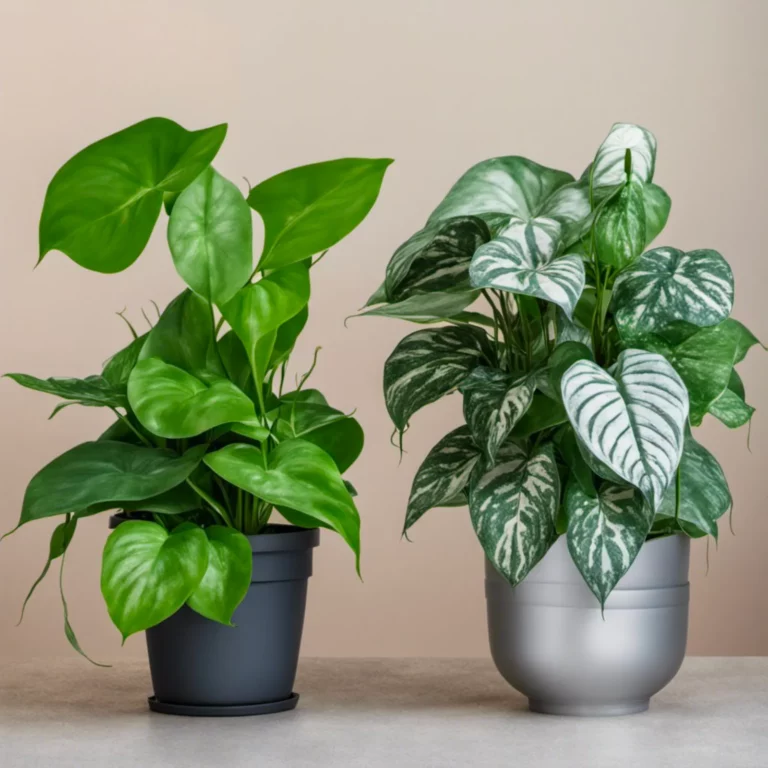Types of Christmas Cactus: A Guide to Different Varieties
If you’re looking to add some festive cheer to your home during the holiday season, a Christmas cactus is a great option. These plants are known for their beautiful blooms, which can last for several weeks.
But did you know that there are actually several different types of Christmas cactus? In this article, we’ll explore the different varieties and help you identify which one you have.
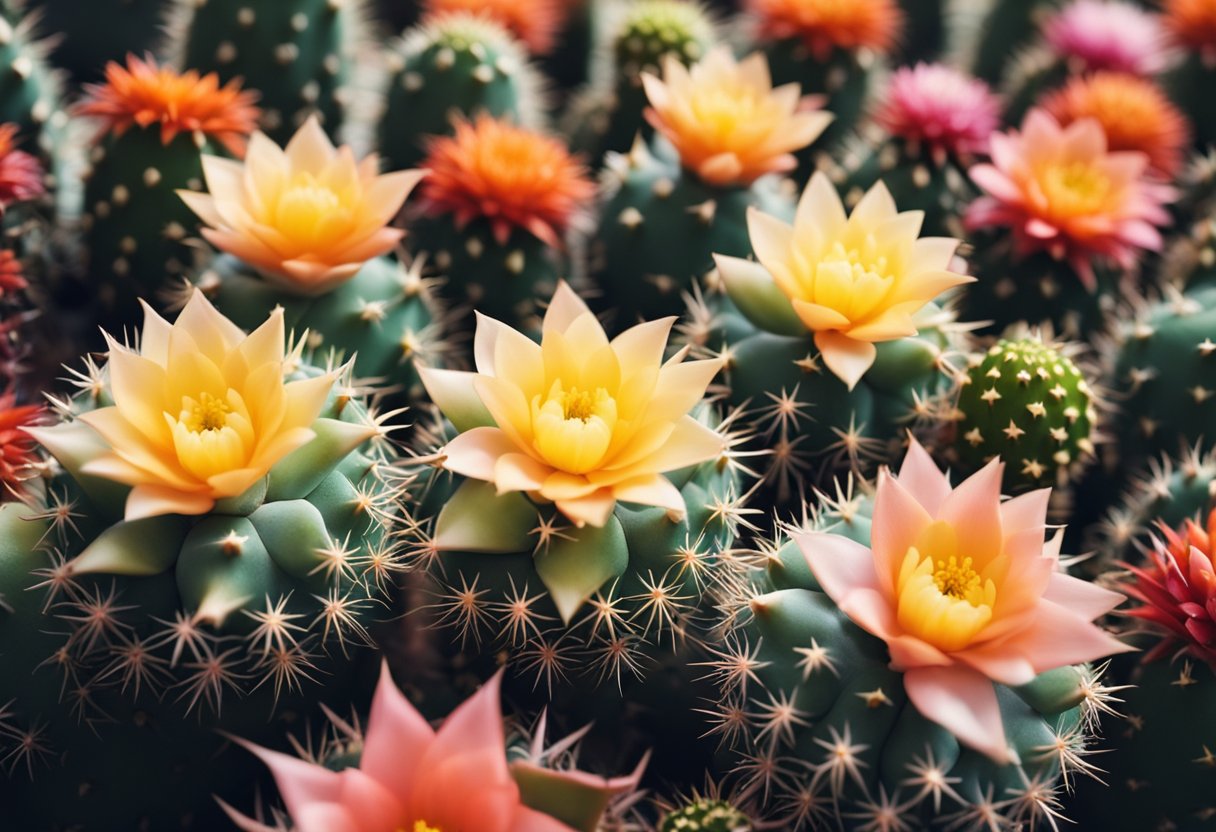
Christmas cacti are native to Brazil and are part of the Schlumbergera genus. There are three main types of Christmas cactus: the Thanksgiving cactus, the Christmas cactus, and the Easter cactus.
While they all look similar, there are some key differences in their appearance and blooming habits. By learning to identify these differences, you can better care for your plant and ensure it blooms at the right time.
Key Takeaways
- There are three main types of Christmas cactus: the Thanksgiving cactus, the Christmas cactus, and the Easter cactus.
- Each type of Christmas cactus has slightly different identifying characteristics and blooming habits.
- By learning to identify the type of Christmas cactus you have, you can better care for it and ensure it blooms at the right time.
History of Christmas Cactus

If you’re a fan of holiday plants, you’ve probably heard of the Christmas cactus. This plant is a popular choice for holiday decorations, thanks to its bright, colorful blooms. But where did the Christmas cactus come from, and how has it evolved over time? Let’s take a closer look.
Origin
The Christmas cactus is native to the tropical rainforests of Brazil. It was first discovered in the early 1800s by a group of European botanists, who were exploring the region in search of new plant species. The botanists were struck by the beauty of the Christmas cactus, with its vibrant pink and red flowers.
Over time, the Christmas cactus became a popular houseplant in Europe and North America. In the early 1900s, plant breeders began experimenting with different varieties of the Christmas cactus, in an effort to create new colors and shapes.
Evolution Over Time
Today, there are many different types of Christmas cactus, each with its own unique characteristics. Some varieties have large, showy flowers, while others have smaller blooms. Some are more resistant to pests and diseases, while others require more care and attention.
Despite their differences, all Christmas cacti share a few common traits. They are all members of the Schlumbergera genus, and they all bloom in response to changes in light and temperature. In the wild, Christmas cacti typically bloom in the fall and winter, when the days are shorter and the nights are cooler.
Overall, the Christmas cactus is a fascinating plant with a rich history and a bright future. Whether you’re a seasoned gardener or a beginner, there’s something special about this beautiful holiday plant.
Types of Christmas Cactus
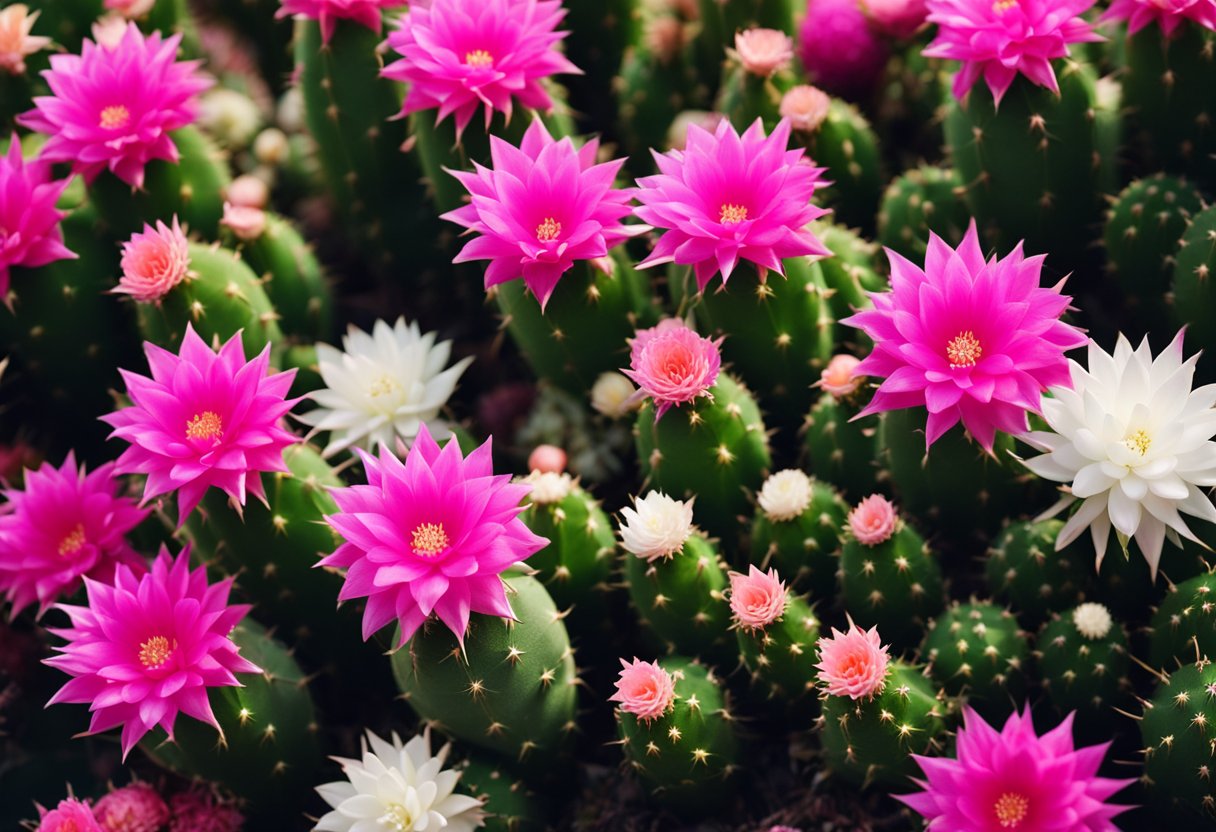
If you are looking to add a touch of holiday cheer to your home, Christmas cactus is an excellent choice. With their vibrant colors and unique shapes, these plants are sure to brighten up any room.
There are three main types of Christmas cactus: Schlumbergera bridgesii, Schlumbergera truncata, and Schlumbergera russelliana. Here is what you need to know about each one:
Schlumbergera Bridgesii
Schlumbergera bridgesii, also known as the Christmas cactus, is the most common type of Christmas cactus. It has long, flat leaves with rounded edges and produces flowers that range in color from pink to red.
This cactus blooms in late fall or early winter and can continue to produce flowers for several weeks.
Schlumbergera Truncata
Schlumbergera truncata, also known as the Thanksgiving cactus, is another popular type of Christmas cactus.
Its leaves are more pointed than those of the Schlumbergera bridgesii, and its flowers are typically pink or white. This cactus blooms in late fall, usually around Thanksgiving, and can continue to produce flowers for several weeks.
Schlumbergera Russelliana
Schlumbergera russelliana, also known as the crab cactus, is the least common type of Christmas cactus.
It has long, flat leaves with pointed edges and produces flowers that range in color from pink to red. This cactus blooms in early winter and can continue to produce flowers for several weeks.
No matter which type of Christmas cactus you choose, these plants are a great way to add some festive cheer to your home during the holiday season. With proper care, your cactus can continue to bloom year after year, bringing joy to you and your family for years to come.
Identifying Characteristics
If you’re wondering whether your cactus is a Christmas cactus, Thanksgiving cactus, or Easter cactus, there are a few key characteristics to look for.
By examining the stem segments, flower colors, and bloom time, you can easily identify which type of cactus you have.
Stem Segments
The stem segments of a Christmas cactus are flat and broad, with rounded edges. On the other hand, the Thanksgiving cactus has stem segments that are more pointed and jagged.
The Easter cactus has stem segments that are flatter and more rounded than the Thanksgiving cactus, but not as broad and flat as the Christmas cactus.
Flower Colors
The flowers of a Christmas cactus are typically pink, red, or white, although there are also varieties with orange, yellow, or purple blooms.
Thanksgiving cacti usually have pink or purple flowers, while Easter cacti have bright pink or red flowers.
Bloom Time
As their names suggest, each type of cactus typically blooms around a different holiday. Christmas cacti bloom in late fall to early winter, usually around Christmas time. Thanksgiving cacti bloom in late fall, typically around Thanksgiving. Easter cacti bloom in the spring, usually around Easter.
Now that you know the identifying characteristics of each type of Christmas cactus, you can easily determine which type you have. Whether you’re an experienced gardener or a beginner, these tips will help you care for your cactus and enjoy its beautiful blooms year after year.
Caring for Your Christmas Cactus
Taking care of your Christmas cactus is essential to keep it healthy and blooming year after year. Below are some tips to help you care for your Christmas cactus.
Watering Requirements
When it comes to watering your Christmas cactus, it’s important to find the right balance. Overwatering can lead to root rot, while underwatering can cause the leaves to wilt and drop.
A good rule of thumb is to water your Christmas cactus when the top inch of soil feels dry to the touch. Make sure to water thoroughly, allowing the water to drain out of the bottom of the pot.
Light and Temperature
Christmas cacti prefer bright, indirect light. Too much direct sunlight can cause the leaves to turn yellow and burn.
During the winter months, keep your Christmas cactus in a cool room with temperatures between 60 and 70 degrees Fahrenheit. Avoid placing your Christmas cactus near drafts, heat vents, or other sources of hot air.
Soil and Fertilization
Christmas cacti prefer well-draining soil that’s rich in organic matter. A good potting mix for Christmas cacti is one that contains peat moss, perlite, and vermiculite.
Fertilize your Christmas cactus once a month during the growing season with a balanced fertilizer. During the winter months, stop fertilizing your Christmas cactus to allow it to rest.
Pruning and Propagation
Pruning your Christmas cactus can help to encourage bushier growth and more blooms. To prune your Christmas cactus, simply pinch off a section of stem with your fingers or use a clean, sharp pair of scissors.
You can also propagate your Christmas cactus by taking stem cuttings and rooting them in water or soil. Once the cuttings have rooted, you can plant them in their own pots.
Remember, taking care of your Christmas cactus is easy as long as you provide it with the right conditions. With a little bit of care and attention, your Christmas cactus will reward you with beautiful blooms year after year.
Common Issues and Solutions
If you’re a Christmas cactus owner, you might encounter some problems. Here are some common issues you might face and how to solve them.
Pest Problems
Pests, such as spider mites and mealybugs, can infest your Christmas cactus. To prevent these pests, make sure you keep your plant clean and free of dust.
If you do find pests on your plant, you can use a solution of water and dish soap to get rid of them. Alternatively, you can use a commercial insecticide, but make sure it’s safe for your plant.
Disease Prevention
Christmas cacti are susceptible to root rot, which is caused by overwatering. To prevent root rot, make sure you let the soil dry out between waterings.
Also, make sure your pot has good drainage to prevent water from sitting in the bottom of the pot.
If you do notice signs of root rot, such as yellowing leaves, you should remove the plant from the soil and cut away any affected roots. Repot the plant in fresh soil and make sure you don’t overwater it.
Bud Drop Causes
One of the most common problems with Christmas cacti is bud drop. This can be caused by a number of factors, including too much or too little water, sudden changes in temperature, or exposure to drafts.
To prevent bud drop, make sure you keep your plant in a stable environment with consistent temperature and humidity. Also, make sure you don’t overwater your plant, as this can cause the buds to drop.
If you do notice buds dropping, don’t worry – your plant will still continue to grow and produce new buds.
Christmas Cactus vs. Other Holiday Cacti
If you’re a fan of cacti, you might be wondering about the differences between Christmas cactus and other holiday cacti. Let’s take a closer look to help you identify which type of cactus you have.
Easter Cactus
Easter cactus plants have flat, star-shaped flowers and smoother leaf edges with no notches.
They require a much longer cool and low light period to form flowers. If you’re looking for a cactus that blooms in the spring, then you might have an Easter cactus.
Thanksgiving Cactus
Thanksgiving cactus, also known as crab cactus, has dark green stems made up of segments called phylloclades.
Each segment has three or four little points on the edges, and the flowers are similar to those of Christmas cactus. If your cactus blooms in the fall, then you might have a Thanksgiving cactus.
Differences in Care
While Christmas, Easter, and Thanksgiving cacti have some differences in appearance, they also have some differences in care. Christmas cactus prefers bright, indirect light and should be watered when the top inch of soil is dry.
Easter cactus requires more light and should be watered when the soil is slightly dry. Thanksgiving cactus likes bright, indirect light and should be watered when the soil is dry to the touch.
Now that you know the differences between Christmas cactus and other holiday cacti, you can take better care of your plant and enjoy its beautiful blooms!
Decorative Uses
If you’re looking to add some festive cheer to your home decor, the Christmas cactus is an excellent choice. Here are some ideas for how to use your Christmas cactus to decorate your home.
Potting Ideas
When it comes to potting your Christmas cactus, there are a few things to keep in mind. First, make sure you choose a pot that is the right size for your plant. You want a pot that is just slightly larger than the root ball of your plant. Second, choose a pot with good drainage.
You don’t want your plant to sit in water, as this can lead to root rot. Finally, choose a pot that complements the color of your plant. A neutral-colored pot will allow the color of your plant to shine, while a brightly colored pot can add a pop of color to your decor.
Display Settings
There are many ways to display your Christmas cactus. One simple way is to place it on a windowsill where it can get plenty of bright, indirect light. Another option is to place it on a table or shelf where it can be seen and admired.
You can also group several Christmas cacti together to create a stunning display. If you want to get creative, you can even use your Christmas cactus to make a wreath or centerpiece. The possibilities are endless!
Gifting Christmas Cacti
If you’re looking for a unique and thoughtful gift for your loved ones during the holiday season, a Christmas cactus is an excellent choice. Here are some tips to help you choose the right plant and present it in a beautiful way.
Choosing the Right Plant
When selecting a Christmas cactus, consider the recipient’s preferences and the environment in which the plant will be placed.
There are three main types of Christmas cacti: the Thanksgiving cactus, the Christmas cactus, and the Easter cactus. Each type has its unique characteristics and flowering patterns.
The Thanksgiving cactus has pointed teeth on the edges of its leaves and blooms in November, while the Christmas cactus has rounded leaves and blooms in December. The Easter cactus has more rounded leaves than the Thanksgiving cactus but fewer flowers than the Christmas cactus, and it blooms in the spring.
Make sure to choose a healthy plant with no signs of damage or disease. Check the soil for moisture and choose a pot with good drainage. You can also consider purchasing a plant that is already in bloom to add an extra touch of festivity.
Presentation Tips
Once you’ve chosen the perfect Christmas cactus, it’s time to present it in a beautiful way. Here are some ideas to get you started:
- Wrap the pot in colorful paper or fabric and tie a ribbon around it.
- Place the plant in a decorative basket or planter.
- Add some holiday-themed accessories, such as miniature ornaments or a small stuffed animal.
- Include a handwritten note or card to personalize the gift.
Remember to provide care instructions, including watering and light requirements, to ensure the plant thrives in its new home.
Giving a Christmas cactus is a thoughtful and unique way to spread holiday cheer. With these tips, you can choose the perfect plant and present it in a beautiful way that your loved ones will cherish for years to come.
Frequently Asked Questions
How do I care for a Christmas cactus?
To care for a Christmas cactus, make sure you give it the right amount of light and water. Water it thoroughly when the soil feels dry to the touch, but avoid overwatering.
Keep it in a bright but indirect light and protect it from direct sunlight. Additionally, make sure the temperature is between 60-70°F (15-21°C) during the day and between 50-55°F (10-13°C) at night.
What are the light requirements for a Christmas cactus?
Christmas cacti prefer bright but indirect light. Direct sunlight can burn the leaves, so it’s best to place them near a window that receives bright but filtered light.
If you don’t have a window that provides enough light, you can supplement with artificial light.
How can I differentiate between a Christmas cactus and a Thanksgiving cactus?
While both Christmas and Thanksgiving cacti are similar in appearance, there are some differences.
The Thanksgiving cactus has pointed, claw-like projections on its stem, while the Christmas cactus has rounder, smoother projections. Additionally, the Thanksgiving cactus blooms earlier than the Christmas cactus, and its flowers have a more orange or pinkish hue.
What are some homemade fertilizer options for nurturing a Christmas cactus?
You can make your own fertilizer for your Christmas cactus by mixing one part white vinegar with three parts water.
Alternatively, you can mix used coffee grounds with water and use it as a fertilizer. Just make sure not to over-fertilize, as this can damage the plant.
Why are the leaves on my Christmas cactus limp or drooping?
Limp or drooping leaves on a Christmas cactus can be a sign of overwatering or underwatering.
Make sure you’re watering your plant correctly and that the soil is well-draining. Additionally, make sure the temperature and humidity levels are appropriate.
Are there rare colors of Christmas cactus, and if so, what are they?
While the most common colors of Christmas cactus are pink, red, and white, there are also some rare colors, such as orange, purple, and yellow.
These colors are less common and may be harder to find, but they can add a unique touch to your collection.

